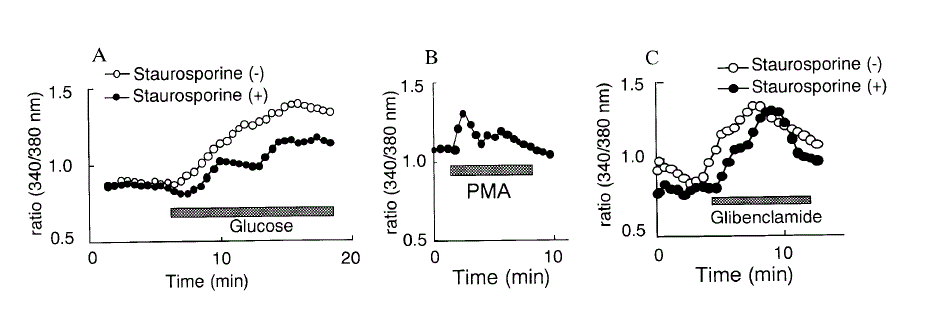
 |
| Figure 3:Effect of glibenclamide on KATP and KCa channels. Control. KATP channels were recorded at a membrane potential of -50 mV. After application of glibenclamide (100 nmol/L). Glibenclamide completely blocked KATP channels. B. Control. The KCa channels were recorded at a membrane potential of 50 mV. After application of glibenclamide (100 nmol/L). The activities of KCa channels were not altered by application of glibenclamide (100 nmol/L). C. Effects of 10 mmol/L glucose on ATP-sensitive K+ (KATP) and Ca2+-dependent K+ (KCa) channel. Both KATP (small conductance and long opening: arrow) and KCa (large conductance and spiky opening) channels were seen before application of glucose. The membrane potential was 50 mV. 10 mmol/L glucose blocked both KATP and KCa channels almost completely. |